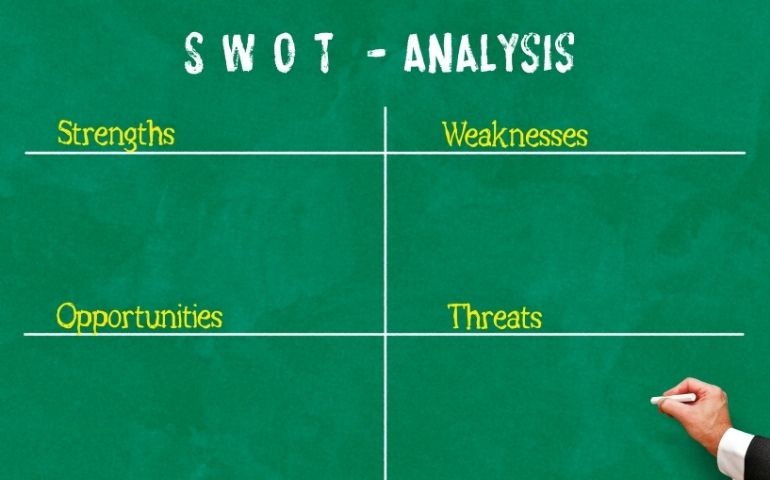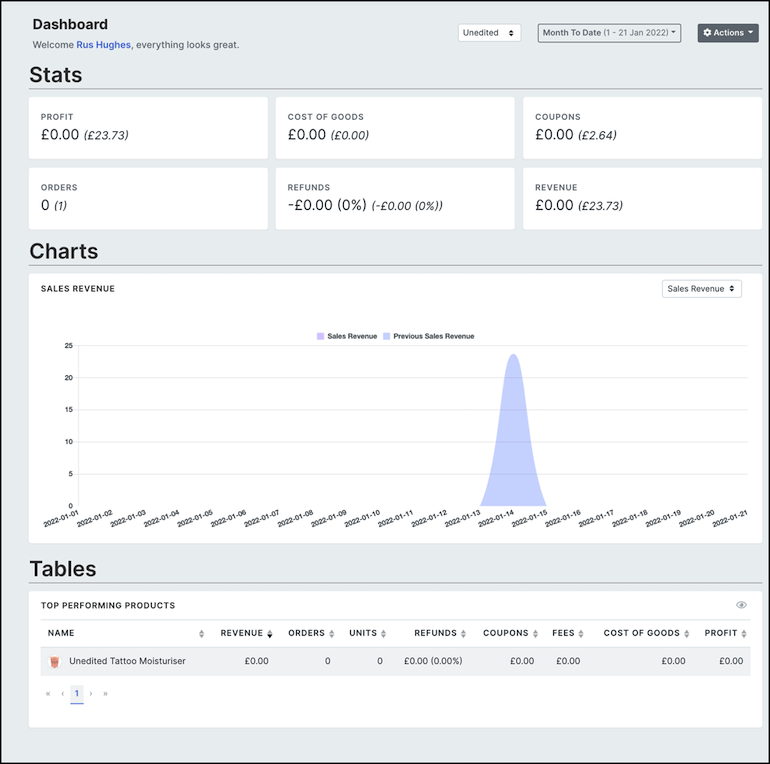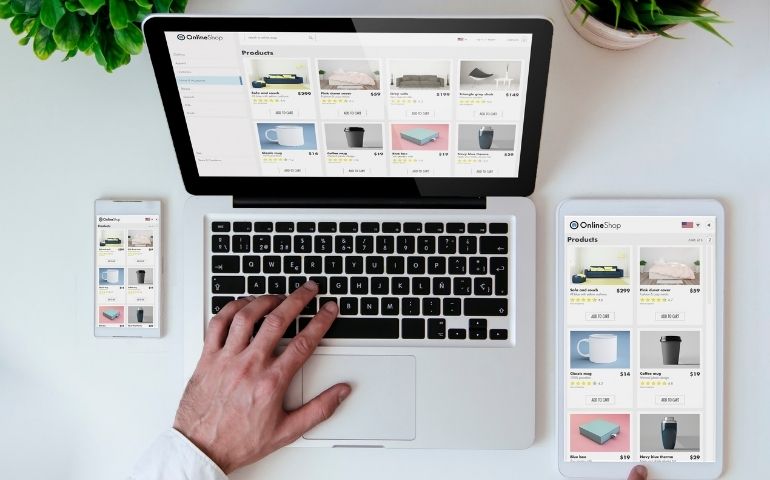
It’s normal to feel threatened by ecommerce competition. But don’t let it get in the way of your store’s success. Instead, think of what you’ll reap when you do succeed – the knowledge that your product or service is solving real problems, financial rewards for everyone in your team, the satisfaction of achieving your goals, and more.
In this article, we’ll share 6 actionable strategies that you can use to stay ahead of your competitors. Let’s begin…
Table of Contents
- 1) Know who you’re up against by doing competitor research
- 2) Who’s your target audience?
- 3) Stay ahead of ecommerce competition with strategic planning
- 4) Attract new customers with engaging marketing materials
- 5) Put your customers first
- 6) User experience on your website matters
- Final thoughts
1) Know who you’re up against by doing competitor research
Getting into ecommerce – or any business, for that matter – without doing any competitor research is financial suicide. Before you launch, promote, or try to sell anything, it’s important to know more about your market.
By knowing your competition – and how you stand relative to them – you can uncover a lot of opportunities and mitigate risks for your store. Thorough research will give you valuable insights into your own store’s potential demand and profitability.
You can begin by checking out their website. Is it user-friendly? What are their prices like? Do they offer discounts and packages? What about shipping? Do they have an active and engaged following on social media? Study their website as best you can and take notes on where you think you can do better.
What are the different types of competitors?
There are two types of ecommerce competitors:
- Direct competitors offer similar products/services and target the same audience (this type of competitor is easier to identify)
- Indirect competitors offer alternate products/services that could potentially fulfill your target audience’s pain points (depending on your niche, indirect competitors may be a bit tricky to identify)
So how do you go about doing competitor analysis?
One is by doing a SWOT analysis. This can help you understand your strengths and weaknesses in relation to your competitors, as well as figure out opportunities and threats that might exist for your business.

Another is by doing in-depth SEO competitor analysis. This type of research is helpful if you’re looking to beat the competition on Google and other search engines for that sweet, free organic traffic.
You can use a tool like Ahrefs or Semrush to find your competitors, look for their high-ranking and most profitable keywords, assess ranking difficulty, and then develop a strategy that will help you capitalize on this trove of competitor data!
2) Who’s your target audience?
Now that you know who your competitors are, it’s time to know your audience better. I know you’re probably thinking, “What audience? I want to market to everyone in the world!”
Well, the answer is you can certainly try marketing to billions of people. But you will be wasting a LOT of resources with very little to show for it. It’s like throwing a bunch of things at the wall and waiting to see what sticks! To say it’s inefficient and ineffective would be a huge understatement.
But by narrowing down your audience to a specific group of people with common interests, you can write marketing copy that will resonate with them and make them go, “Oh, I need this product in my life right now!” Highly targeted messages make your marketing activities more effective, driving higher conversions, too.
Say hello to your avatar(s)
Start by making one or more customer avatars; they are a representation of your ideal customer. Give your avatar a name and create an entire identity around them by giving them “personal” details, such as:
- Age
- Gender
- Marital status
- Geographic location
- Income
- Goals and values
- Job title and roles
- Educational background
You can then grab a nice “profile picture” for your avatar from a free photo site like Unsplash to make the whole thing more realistic.
Every time you work on your marketing copy, email copy, social media copy, etc. think about how your avatar would react. Does the copy address their pain points? Would they follow your call to action? Revise and rewrite until you come up with something that would resonate with your avatar.

3) Stay ahead of ecommerce competition with strategic planning
So now you know who your competitors and target customers are. It’s time to brainstorm how to crush the competition, make your product sell like hotcakes, and rake in that cash!
You’ve no doubt heard of Benjamin Franklin’s quote, “If you fail to plan, you are planning to fail.”
The consequences of failing to plan can lead to financial loss and business closure. Emotional damage – depression, anxiety, etc. – is not to be scoffed at either. Either way, winging your ecommerce operation is a big no-no, especially when there’s a lot at stake! To succeed, you will need to streamline your plans to maximize profit potential and get your ROI sooner rather than later.
Examples of what to discuss in your brainstorming sessions
- A clear business description
- Short and long-term goals
- Map out your financial needs, e.g. various expenses and projected income
- More in-depth competitor analysis
- Identify your product’s unique selling point (USP)
- Marketing strategies to use
- And more
Planning an ecommerce strategy takes time. Stick to the plan as much as possible, but allow for flexibility as well when the situation calls for it. Schedule regular meetings or brainstorming sessions to assess where your business is according to the roadmap. Learn from mistakes and find areas to improve on.
How can an ecommerce dashboard help refine your strategy?
You can use an ecommerce dashboard like Blue Odin to get deeper insights into how your business is doing. This is because Blue Odin can monitor your profits, product performance, sales trends, and other key metrics and KPIs in real-time.
Here’s a screenshot of Blue Odin’s dashboard:

Blue Odin is also a powerful email marketing tool. You can send highly targeted emails to segmented customer lists, schedule automated follow-ups, offer coupons to new products, and more — all within Blue Odin!
Click here to sign up and get started with Blue Odin!
4) Attract new customers with engaging marketing materials
Visually appealing marketing graphics is one way to make your business stand out amongst your ecommerce competition. Hire a designer who can help create eye-catching graphics for your brand.
To increase brand recognition, make sure your logo and brand name is visible. Use your brand colors and font, too. Be consistent with your design language so no matter which platform you upload your marketing materials to, people will recognize your brand! Of course, don’t forget to add a call to action so they know what to do to access the solution you’re offering.


The two main types of marketing materials
There are many different types of marketing materials, but they can be classified into two:
- Print materials like brochures, flyers, and posters are used to promote your business in the offline world (though these can also be shared online).
- Digital materials are used for online marketing, whether it be on your website, email copy, social media, etc. Examples include social media graphics, blog graphics, infographics, banners, videos, lead magnets like ebooks and reports, presentations, case studies, and more.
For ecommerce businesses, digital materials are preferable. They can be repurposed from one form to another and be shared in many places online.
For example, your blog post graphics can also be used in your email marketing and social media campaigns. You can even use them in your ads or use them as thumbnail in videos. In short, there are endless opportunities to create marketing collateral that can potentially go viral in just a few hours!
5) Put your customers first
Customer satisfaction is key to a successful ecommerce business. Create amazing experiences for your customers by putting them first in all aspects of your business. Think carefully about how each business decision affects your customers – will they benefit from the changes in any way, will they continue buying from you or will they go over to the competition, and so on.
Here are a few ways you can show your customers they come first:
- Provide a positive customer experience
- Offer excellent customer service and maintain a positive relationship with them
- Educate them on how to make the most of their purchase
- Don’t ever sell out – quality products come first vs quick profits
- Loyalty programs that will add value
Satisfied customers are more likely to give raving reviews, which you can then use in your marketing materials to help attract more potential customers! Treating your customers right can turn them into loyal and repeat customers who will not hesitate to recommend you to their family, friends, and followers.
6) User experience on your website matters
In the world of ecommerce, customer convenience reigns supreme. People want to get information NOW. They want to order something online NOW. They want websites to load INSTANTLY the moment they click it. If you’re a few seconds too late or your site’s a mess, then they’ll leave and go to your competitors.

When building and designing your website, approach it from a potential customer’s point of view. Here are a few tips on how you can meet people’s expectations and provide them with a good user experience when they visit your website:
- Make your web pages load fast on ALL devices – nearly 70% of online consumers say slow web pages negatively affect their willingness to purchase from an ecommerce business (source)
- Implement a mobile-friendly design – smartphone users account for 72% of ecommerce traffic worldwide and 60% of ecommerce orders came from a mobile device (source)
- Provide a seamless experience – from the moment they land on your website all the way to checkout and payment
- Use a site layout that gives users access to the information they need in just a few clicks and maximizes conversions
- Use plenty of white space and colors that are easy on the eyes
- Navigation should be intuitive – don’t make it hard for visitors to look for stuff on your website
- Make your calls to action visible – tell your visitors what you want them to do
Your website is your #1 marketing tool online. Use it to provide your customers with all the information they need about your products and services so that they can make the right buying decision.
Final thoughts
Competition is generally good for consumers. It gives them plenty of options, and it challenges businesses to innovate and continuously improve their products and services. To sum up this blog post, do whatever it takes to be better than any of your ecommerce competitors so you can achieve the success you’ve envisioned from the start!








